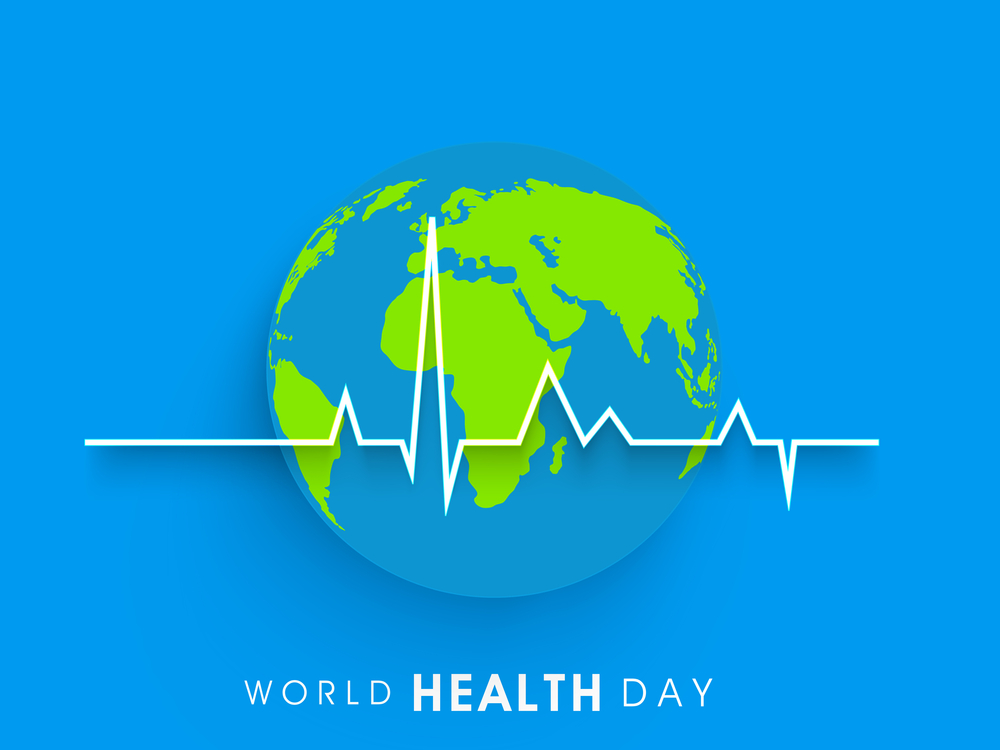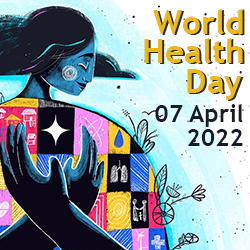When we design the strategy within the framework of External Relations and Communications to progressively become a successful institution and/or corporation within the public and/or private sector, there is at least one avenue where we already excel at reaching our target market. Whether it is online, at proactive networking scenario, or through word-of-mouth referrals, we do have a niche – and it is working for us.
But no matter how strongly we are performing within our niche, at a certain point, that niche will inevitably become saturated. We should eventually claim the share of our target market that we are able to reach through this channel, and there simply will not appear any more untapped leads left to capture.
At that point, we may feel like we are stuck at a marketing crossroads! However, we need to continue growing our business by expanding our pool of qualified leads and exploring new channels to strengthen our corporate branding. Here is precisely where we will need to find another ‘innovative niche’ that is relatively similar to ours – an alternate route to meeting our target market where they are at.
Venturing beyond our safe, reliable niches to find news customers in less familiar territory can feel risky. Nevertheless, this should not intimidate us – so long as we have designed actions through and created a solid, data-backed strategy, taking these calculated risks is the only way to sustain our business’ growth.
At that point, we may feel like we are stuck at a marketing crossroads! However, we need to continue growing our business by expanding our pool of qualified leads and exploring new channels to strengthen our corporate branding. Here is precisely where we will need to find another ‘innovative niche’ that is relatively similar to ours – an alternate route to meeting our target market where they are at.
Venturing beyond our safe, reliable niches to find news customers in less familiar territory can feel risky. Nevertheless, this should not intimidate us – so long as we have designed actions through and created a solid, data-backed strategy, taking these calculated risks is the only way to sustain our business’ growth.
But how do we find the calculated risks that will move our External Relations and Marketing strategy forward?
- Meet our target market where they are.
The key to identifying untapped ways to reach untapped segments of our target market is to look for niches that look similar to the ones we are successful in. Whether our business is a small CRO (Contract Research Organization) to offer clinical research services targeting top local and/or international clients / partners or a Fortune 500 company targeting high-powered executives, we become successful reaching them when we meet them in the spaces – whether virtual or physical – where they already spend their time. From there, our goal is to show them what we do best by finding thoughtful ways to add value to their experience in a way that we generate a real impact.
- Challenge our assumptions.
If we are a niche service business, we find the vast majority of our clients through referrals, and have virtually never obtained a lead through our website. We might assume digital marketing would never work for us. But what does the data say? Have we actually done the keyword research and determined that nobody is searching for our offering online?
What if users are searching for it, but they are naming it something different? What if they are searching for it, but our site is not showing up in the results because we have not invested in solid SEO? What if they are searching for it, but they are clicking on our competitor’s paid ad because it shows as the first result on Google?
Avoid to make the mistake of writing an idea off just because we have not tried it yet. Sometimes, the assumptions our Strategic Communications Team made about marketing our business will prove correct – but not always.
- Embrace risk as part of our external relations and business strategy.
We have gone thru the first two steps: we have identified a thoughtful way to meet new customers where they are and we have achieved a 'smart' research, and it seems like a great opportunity. But we are still feeling skeptical – what if it doesn’t work? What if something else is more competitive than our product, service, even our current 'vision'?...
This hesitation is natural, but it is not our best ally. Taking calculated risks is key to successful marketing. We can discuss potential outcomes or stare at the data forever, but we are not able to predict whether an idea will work with 100% certainty. Only by implementing actions taking a risk on a marketing idea that might surprise our Communications and External Relations colleagues, we will either be successful and communicate our brand message and unique vision to an untapped segment of our target market, and/or we will learn valuable lessons that will inform our next calculated risk.
- Meet our target market where they are.
The key to identifying untapped ways to reach untapped segments of our target market is to look for niches that look similar to the ones we are successful in. Whether our business is a small CRO (Contract Research Organization) to offer clinical research services targeting top local and/or international clients / partners or a Fortune 500 company targeting high-powered executives, we become successful reaching them when we meet them in the spaces – whether virtual or physical – where they already spend their time. From there, our goal is to show them what we do best by finding thoughtful ways to add value to their experience in a way that we generate a real impact.
- Challenge our assumptions.
If we are a niche service business, we find the vast majority of our clients through referrals, and have virtually never obtained a lead through our website. We might assume digital marketing would never work for us. But what does the data say? Have we actually done the keyword research and determined that nobody is searching for our offering online?
What if users are searching for it, but they are naming it something different? What if they are searching for it, but our site is not showing up in the results because we have not invested in solid SEO? What if they are searching for it, but they are clicking on our competitor’s paid ad because it shows as the first result on Google?
Avoid to make the mistake of writing an idea off just because we have not tried it yet. Sometimes, the assumptions our Strategic Communications Team made about marketing our business will prove correct – but not always.
- Embrace risk as part of our external relations and business strategy.
We have gone thru the first two steps: we have identified a thoughtful way to meet new customers where they are and we have achieved a 'smart' research, and it seems like a great opportunity. But we are still feeling skeptical – what if it doesn’t work? What if something else is more competitive than our product, service, even our current 'vision'?...
This hesitation is natural, but it is not our best ally. Taking calculated risks is key to successful marketing. We can discuss potential outcomes or stare at the data forever, but we are not able to predict whether an idea will work with 100% certainty. Only by implementing actions taking a risk on a marketing idea that might surprise our Communications and External Relations colleagues, we will either be successful and communicate our brand message and unique vision to an untapped segment of our target market, and/or we will learn valuable lessons that will inform our next calculated risk.
Tags :
Calculated risks
Communications and Marketing Strategies
External Relations
International Business Development
Posted by Christopher Oscar de Andrés, on Thursday, April 21st 2022 at 19:00
|
Comments (0)
Question is what is Good Health?
In the midst of a pandemic, a polluted planet, increasing diseases like cancer, asthma, heart disease, on World Health Day 2022, UN agencies and other international organizations such as World Health Organization (WHO) will focus global attention on urgent actions needed to keep humans and the planet healthy and foster a movement to create societies focused on well-being.
WHO estimates that more than 13 million deaths around the world each year are due to avoidable environmental causes. This includes the climate crisis which is the single biggest health threat facing humanity. No doubt that climate crisis is a paradigm of the health crisis.
As Cigna’s experts express, for some, good health may be the absence of illness. For others, it may be following a balanced diet or living a healthy lifestyle. In reality, good health is made up of several factors and, as defined by the World Health Organization (WHO), is a “state of complete physical, mental, and social well-being.” (1)
Building a fairer, healthier world.
The theme for this year’s World Health Day is “building a fairer, healthier world”. The WHO is calling on leaders across the globe to ensure that all people have access to quality healthcare and that they are granted living and working conditions that are safe and conducive to good overall health. (2)
It’s been a trying year for all of us. COVID-19 has hit all countries hard, but communities that were already vulnerable, who are less likely to have access to quality healthcare, are more exposed to the disease, and are disproportionately affected. (3)
As Cigna’s experts express, for some, good health may be the absence of illness. For others, it may be following a balanced diet or living a healthy lifestyle. In reality, good health is made up of several factors and, as defined by the World Health Organization (WHO), is a “state of complete physical, mental, and social well-being.” (1)
Building a fairer, healthier world.
The theme for this year’s World Health Day is “building a fairer, healthier world”. The WHO is calling on leaders across the globe to ensure that all people have access to quality healthcare and that they are granted living and working conditions that are safe and conducive to good overall health. (2)
It’s been a trying year for all of us. COVID-19 has hit all countries hard, but communities that were already vulnerable, who are less likely to have access to quality healthcare, are more exposed to the disease, and are disproportionately affected. (3)
Some facts to take into account:
- One in four adults and 81% of adolescents do not do enough physical activity. (4)
- When it comes to mental health, depression is one of the leading causes of disability, with suicide as the second leading cause of death among 15-29-year-olds. (5)
- In terms of nutrition, 47 million children under the age of five are too thin for their height. (6)
While the COVID-19 pandemic showed us the healing power of science, it also highlighted the inequities in our world. The pandemic has revealed weaknesses in all areas of society and underlined the urgency of creating sustainable well-being societies committed to achieving equitable health now and for future generations without breaching ecological limits. The present design of the economy leads to inequitable distribution of income, wealth and power, with too many people still living in poverty and instability. A well-being economy has human well-being, equity and ecological sustainability as its goals. These goals are translated into long-term investments, well-being budgets, social protection and legal and fiscal strategies. Breaking these cycles of destruction for the planet and human health requires legislative action, corporate reform and individuals to be supported and incentivized to make healthy choices.
Therefore, this World Health Day, it is relevant to raise awareness about health equality and the importance of building a fairer, healthier world in crosscutting issues.
Download and share Cigan's World Health Day information flyer PDF
- One in four adults and 81% of adolescents do not do enough physical activity. (4)
- When it comes to mental health, depression is one of the leading causes of disability, with suicide as the second leading cause of death among 15-29-year-olds. (5)
- In terms of nutrition, 47 million children under the age of five are too thin for their height. (6)
While the COVID-19 pandemic showed us the healing power of science, it also highlighted the inequities in our world. The pandemic has revealed weaknesses in all areas of society and underlined the urgency of creating sustainable well-being societies committed to achieving equitable health now and for future generations without breaching ecological limits. The present design of the economy leads to inequitable distribution of income, wealth and power, with too many people still living in poverty and instability. A well-being economy has human well-being, equity and ecological sustainability as its goals. These goals are translated into long-term investments, well-being budgets, social protection and legal and fiscal strategies. Breaking these cycles of destruction for the planet and human health requires legislative action, corporate reform and individuals to be supported and incentivized to make healthy choices.
Therefore, this World Health Day, it is relevant to raise awareness about health equality and the importance of building a fairer, healthier world in crosscutting issues.
Download and share Cigan's World Health Day information flyer PDF
-----
Topics & Sources:
(1) World Health Organization. Constitution.
(2) World Health Organization. World Health Day 2021.
(3) Centers for Disease Control and Prevention. Health Equity Considerations and Racial and Ethnic Minority Groups.
(4) World Health Organization. Physical activity.
(5) World Health Organization. Mental Health.
(6) World Health Organization. Levels and trends in child malnutrition.
Topics & Sources:
(1) World Health Organization. Constitution.
(2) World Health Organization. World Health Day 2021.
(3) Centers for Disease Control and Prevention. Health Equity Considerations and Racial and Ethnic Minority Groups.
(4) World Health Organization. Physical activity.
(5) World Health Organization. Mental Health.
(6) World Health Organization. Levels and trends in child malnutrition.
Category
Recent posts
Archives
#Team Management #Gestión de Equipo International Business Development #Gestión de Equipo Comercial
5 MISSION AREAS IN HORIZON EUROPE
Acceso universal al tratamiento del sida
ACNUR
actor Pepe Sancho
ADHESIÓN DE CROACIA A LA UE
advertising / teleshopping spots
Africa
Alianza Atlántica
Alianza del Pacífico
Alibaba
Alibaba Group Holding Ltd.
AlipayApp
Amnistía Internacional
Ana Pastor
AnálisisyGestiónInteligenteDeDatos
Angela Merkel
Banco Central Europeo (BCE)
Banco Mundial
Barack Obama
batalla del sector del taxi y VTC
Benjamin Franklin
Bill Gates
binomio chavismo / antichavismo
Blockchain opportunities in international public health care sector
Blockchain technologies in health care
Blog Posts
Boris Johnson
Brexit
BUILDING THE CITIES OF THE FUTURE
China
Comisión Europea
Coronavirus
Covid-19
COVID-19
Cybercrime
David Cameron
Editorial Universitas SA
EU Convention of Human Rights
European Commission
FMI
Henrique Capriles
Human Rights
ICAA
International Business Development
Jack Ma
Jean-Claude Juncker
Mariano Rajoy
Obama
ONU
OSCE
The Council of Europe
Thomas Hammarberg
UNED
UNHCR
Unión Europea
Vladímir Putin









